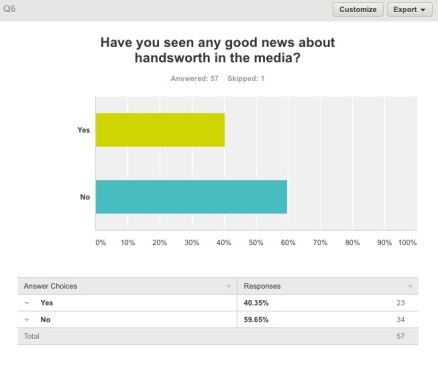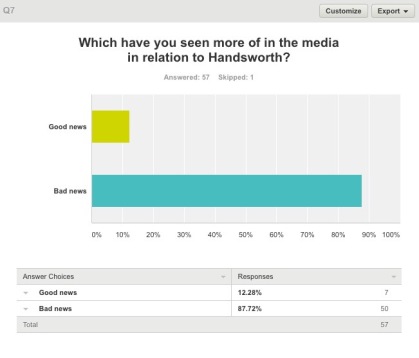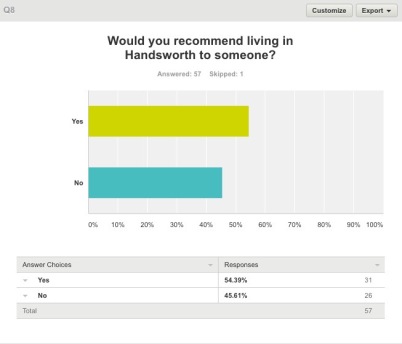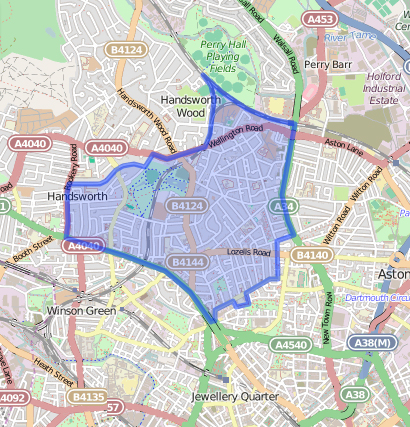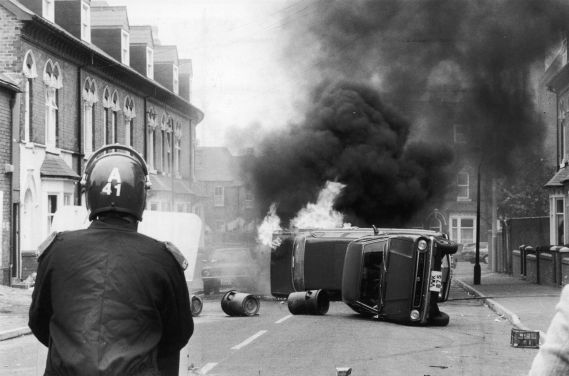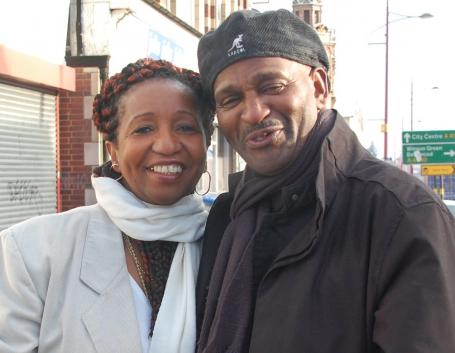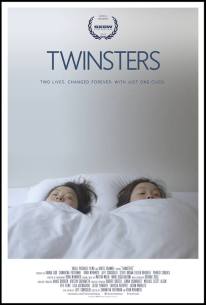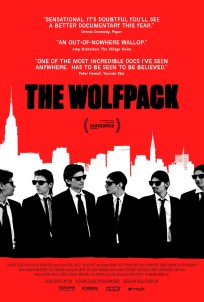At the start of my 3rd year, I knew instantly that I wanted to create a short documentary. This is something that I want to go into after university so I thought creating a documentary for my FMP will add to my portfolio and give me the practice I need before I leave university. At the start of this process, I had two initial ideas, both of these ideas were character based documentaries. I have a passion for character based documentaries, as I believe it allows you to explore deeper into the character’s life, also there is always a grander narrative within these character based documentaries. In the summer holidays, I watched many different types of documentaries which had different styles, messages and genres. I considered creating a subject based documentary, however I decided to stick to my passion. I thought both of my ideas were strong however I believe that creating a documentary about Hector Pinkney has more potential in terms of story.
Initially I did have a lot of doubts about creating this documentary as I thought that it would not attract as many people as I would like it to. When pitching this idea to my lecturer Mez, she took a liking to it and suggested ideas to make it more appealing. She cleared up all my doubts about creating this documentary and I was excited to take it further. I then pitched it again in class, with a different lecturer. He gave me suggestion on how to change this idea and make it broader. I contemplated a lot about changing the documentary idea, however I decided to follow my heart and stick with the original idea that I had. This module has taught me that you should make the documentary you want to make and not what other people want you to make as it is important that you make something you are passionate about and that you can put all your efforts in.
Before starting this project my knowledge on Hector was limited, I knew what he did and the things that he has done however I did not know why he did this. I did not know his motivation to serve the community in the way that he does. I started conducting my primary research, I had set up a meeting with Hector and got him to talk about his past and what he has experienced. This was extremely beneficial in terms of me understanding his story better. I was also able to start my secondary research on the places, years, experiences and events that he talked about. This was extremely helpful as he gave me what I needed in order to take this project further. This made me realise that you need to know your documentary subject really well in order to create a documentary about them. It also taught me that you must build a strong relationship with the individuals in your documentary. I feel as though documentaries are all about trust, the individual must trust the filmmaker and must feel comfortable with them in order to share information about their life.
In terms of primary research, I created a survey on survey monkey and distributed over social media. This survey caught the attention of a person who created a page called “Handsworth community” on Facebook. He then messaged me and praised me for bringing up the questions that I did as he has been investigating the same questions. He offered to publicise my work, which I was very excited about. I truly believe that many people on the page will have an interest in my documentary as they are all from the Handsworth area. With this in mind I learnt that getting your project out there is really important, and creating a buzz around your project will be beneficial upon its release, you will have a guaranteed audience which is what every filmmaker want. Social media is extremely important connecting with different people. I recently joined LinkedIn where I found Hectors nephew, I discussed my idea with him and he is willing to be a part of the documentary. I realised that utilising social media whilst creating documentaries is a great tool in order to connect with different people around the world.
Using the primary information, I went on to conduct my secondary research on what I found out about Hector. This helped me greatly in terms of getting a better understanding of the story and gave me an idea of the kind of questions I want to ask during the interview process. I researched into “the dojo community project” which is the original project that Hector’s mother pursued. This was helpful as it gave me an understanding of when it all started, which will be the basis of my documentary. I appreciate this module as it has forced me to look at things that I never would have looked at. At the beginning of this process I was clueless about the concept and idea, however all this research has helped me immensely and made me realise how important research actually is when it comes to documentary filmmaking
The process has made me think on my feet which is something that I am not very good at, however I appreciate this, as this is a skill that I will need in order to work in the media industry. It forced me to get my project together fast and efficiently, even though I would have liked more time, I am aware that when you are working in the media industry you might not even have as much time as we had. This has prepared me for when I leave university. I have also been more assertive with advertising my work and emailing people in order for them to participate in my documentary. One of the biggest things I have learnt in this module is that if you do not ask, you do not get.
In terms of my proposal I would have liked if the images and videos that I found on the internet were clear, as the blurriness of these videos gave my proposal an amateur feel to it and took away the professionalism of it. I did not really want to talk in front of the camera however I believe that this might have been a better approach as it would have shown more of my passion towards the projects. I do like the way the proposal came out thought as it is simple, clear and straight to the point.
I have definitely challenged myself with documentary as it is very different from the other documentaries that I have created. I have more contributors in this film. I have already created a buzz around this documentary which is something that I failed to do with my other ones, and I chose to focus on one character in one area. I believe that getting this documentary to appeal to a wide audience will be my true challenge.


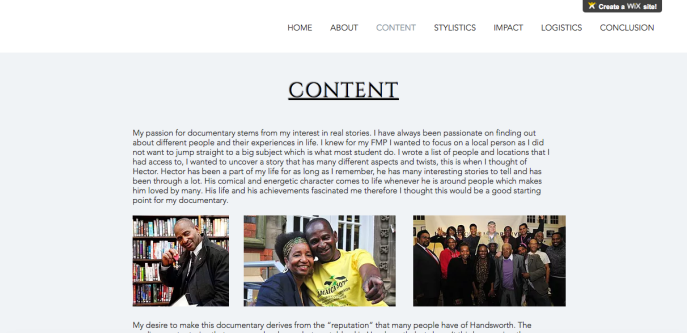
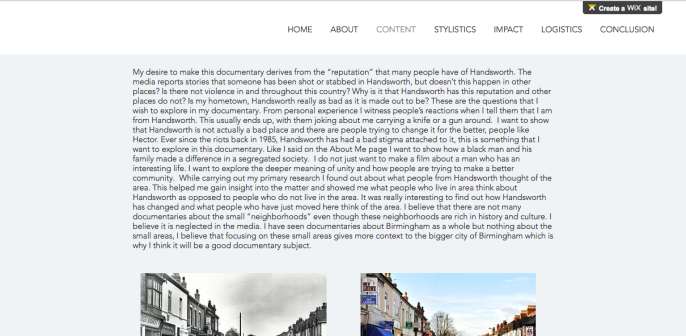
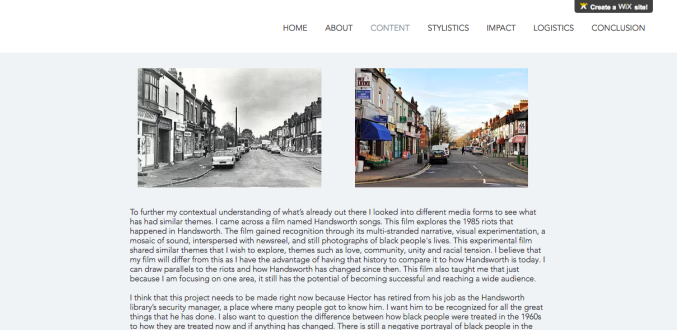
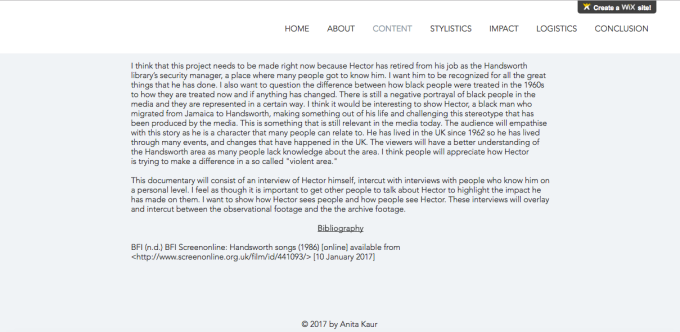
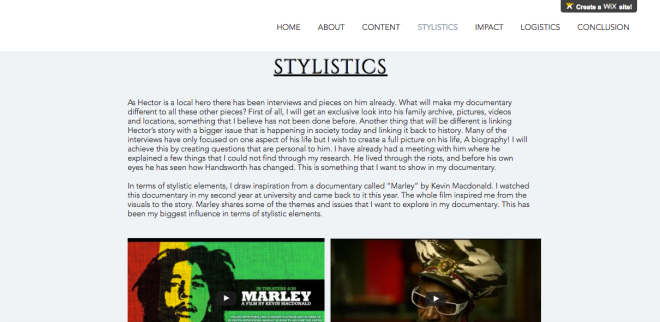



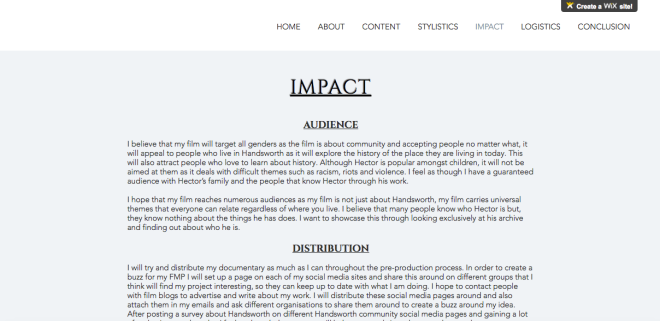

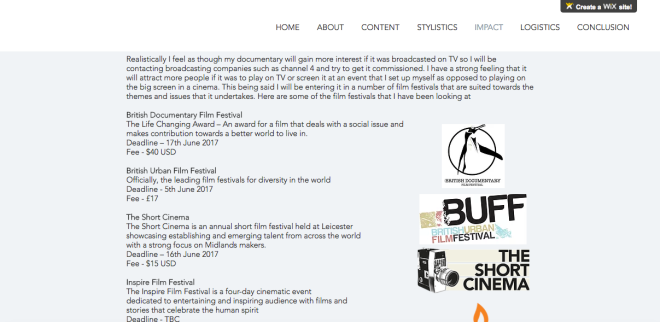

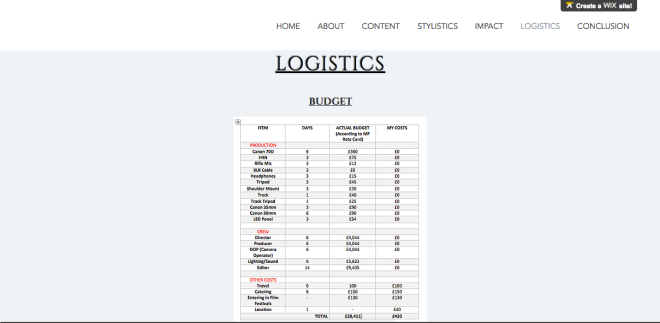


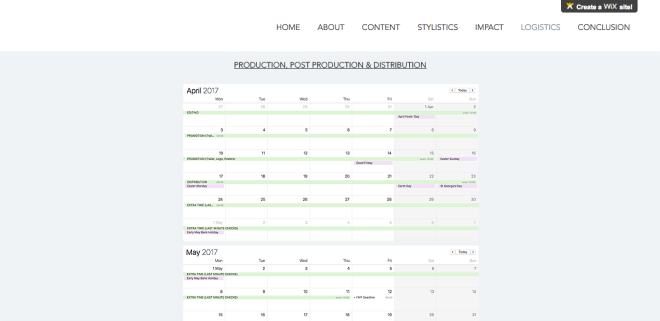

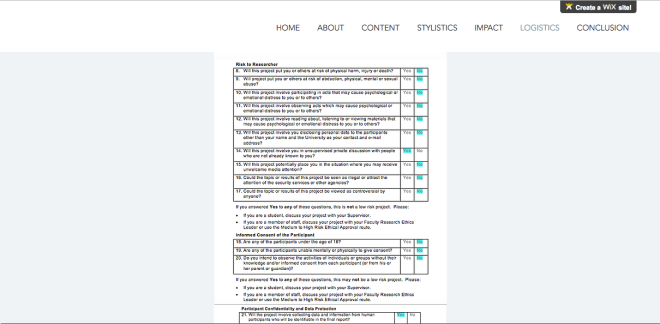
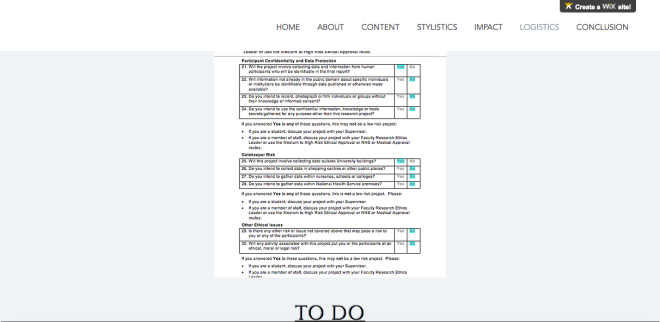

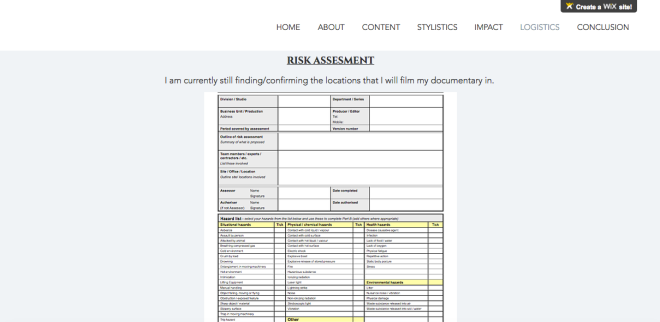

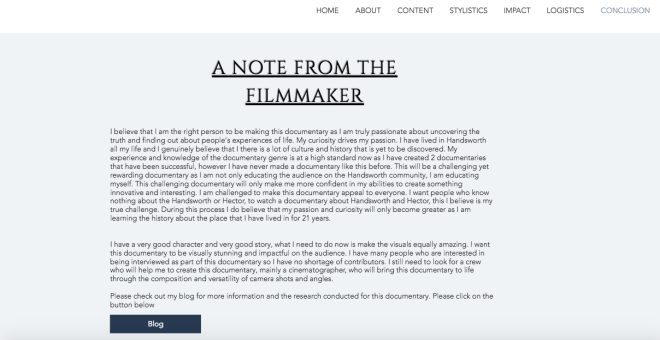
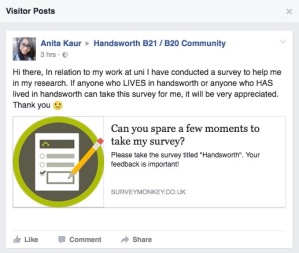
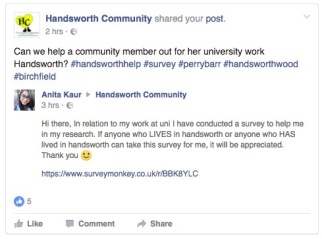

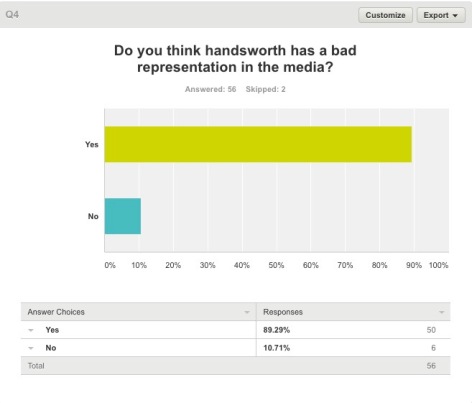 It is evident that the Handsworth locals think that the media portrays handsworth in a negative light. The next question, was to elaborate on their previous answer.
It is evident that the Handsworth locals think that the media portrays handsworth in a negative light. The next question, was to elaborate on their previous answer.